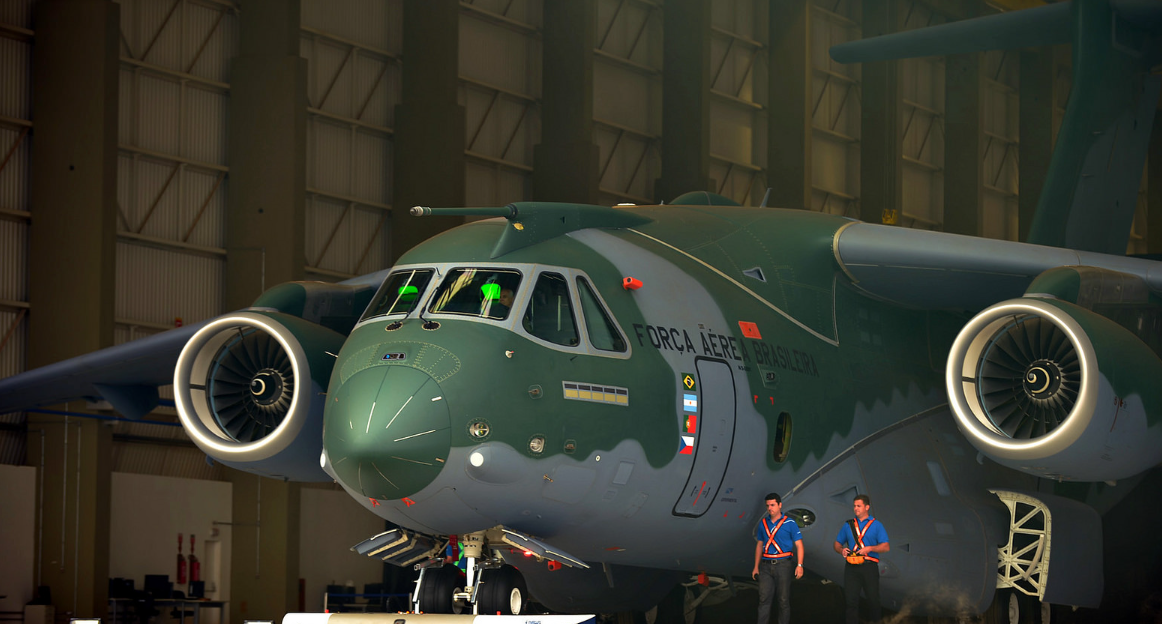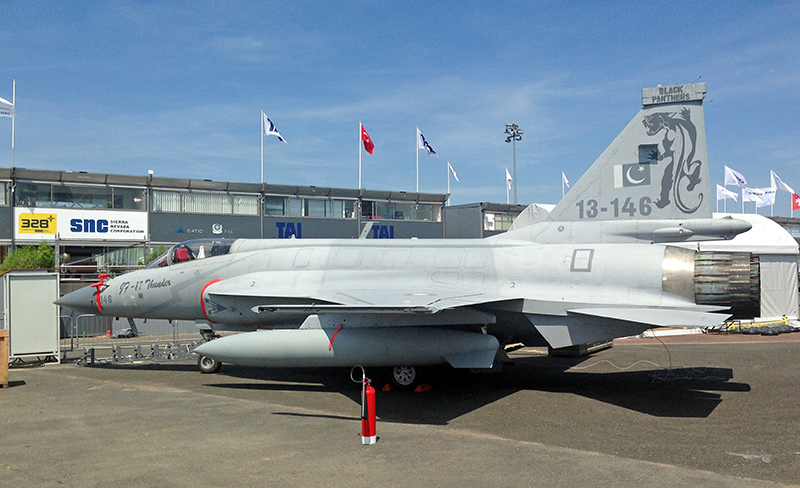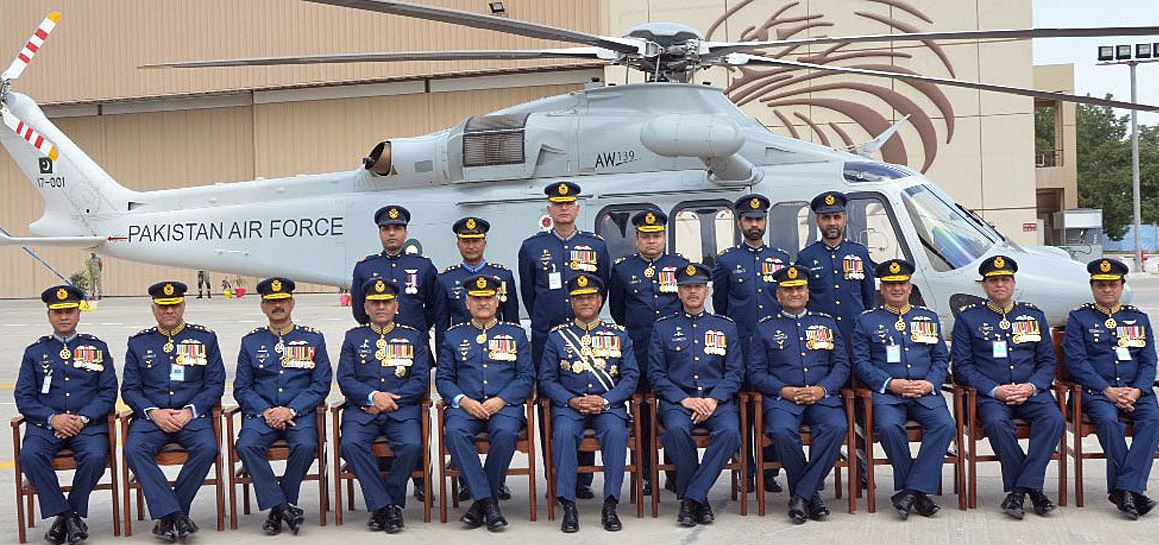2281Views 0Comments

Is There Potential in Brazilian-Pakistani Defence Ties?
In 2008 Pakistan signed a $108 million U.S. agreement with Brazil for the sale of 100 MAR-1 anti-radiation missiles (ARM). The MAR-1 was a significant acquisition for the Pakistan Air Force (PAF). Being an ARM, the MAR-1 became the means by which the PAF’s Mirage and JF-17 fighters could engage enemy radars, and in the process, air defence sites. It is worth noting that even the PAF’s prized F-16C/D Block-52+ is not equipped for SEAD [Suppression of Enemy Air Defence] missions.
The deal was also expensive, at least in relative terms considering that each missile ran for $1 million U.S. a piece, which is substantial for a tactical munition. Given the cost, it is possible that Pakistan was able to obtain something of significance in addition to the missile, such as an infusion of technological know-how.
In addition to the MAR-1, Pakistan also purchased a number of Mectron MAA-1A Piranha within-visual-range air-to-air missiles (WVRAAM). The Piranha A, while not unlike the existing inventory of AIM-9M and PL-5EII WVRAAMs in PAF service, served as a gateway of sorts to the more advanced (and still under-development) MAA-1B, for which Pakistan signed a letter-of-intent to purchase when it is available.
These purchases served as an important bridge for Brazilian-Pakistani commercial defence ties. Not only did they demonstrate Brazil’s willingness to sell Pakistan fairly advanced military technology, but it lent credence to the idea that Pakistan, and the PAF in particular, was serious about acquiring the best possible technology within its financial and political means. In other words, while it is heavily dependent on China for its requirements, it is still willing and able to build relationships with other viable sources, such as Brazil, South Africa and Turkey.
In addition to being one of the world’s largest economic powers, Brazil is a leading political power house in Latin America. While renown for its soccer prowess, the country is also a major player in the aerospace industry through Embraer, a major producer of commercial airliners and business jets. Using its advanced industrial base, Brazil in more recent years ventured into the area of military aviation.
Among the first examples of this effort was the Embraer EMB-314 Super Tucano, a lightweight turboprop designed for flight training and light attack missions. It has over the past several years emerged as one of Brazil’s leading aviation exports. Equipped with modern on-board electronics and capable of delivering a range of air-to-surface munitions, including laser and satellite-guided bombs and laser-guided missiles, the EMB-314 has seen widespread success in securing orders in Latin America, Africa, the Middle East and Asia (with Afghanistan being the most recent user).
Next on Embraer’s roadmap for global commercial success is the KC-390 twin-engine, medium-lift transport aircraft, which is currently under development. Conceived as a critical program for the Brazilian armed forces, the KC-390 has emerged as Brazil’s answer to the large market of users seeking to replace ageing transport aircraft. With the aim to achieve a lower price-point, the KC-390 is being billed as a possible challenger to market incumbents such as the Lockheed Martin C-130J.
The KC-390 conducted its maiden flight in February 2015, and while the aircraft is not expected to enter service until at least 2018, Embraer has not shied away from planning great things for the platform. One highly anticipated feature is the capacity to serve as an air-to-air refuelling (AAR) aircraft, which will enable the KC-390 to refuel fighters and other aircraft in mid-air. Embraer has also submitted the KC-390 for Canada’s Fixed Wing Search and Rescue (FWSAR) requirement, demonstrating its willingness to adapt the KC-390 platform for various mission profiles.
In 2006 Mectron, the vendor of the MAR-1 ARM, partnered with South Africa’s Denel Dynamics to develop the A-Darter fifth-generation high-off-boresight (HOBS) within-visual-range air-to-air missile (WVRAAM). The A-Darter would be the most likely starting point for deeper and hopefully long-standing defence ties, not just between Brazil and Pakistan, but between Pakistan and South Africa as well.
It is unclear exactly what the status of the MAA-1B is, but the PAF did voice its interest in the newer A-Darter as recently as the 2015 Paris Air Show.[1] For Pakistan, the A-Darter is one of a handful of fifth-generation WVRAAMs available on the commercial market, and perhaps the only non-Chinese option available with a shot of being integrated with the JF-17.
At this stage, Pakistan has not signalled any interest in Brazil’s other (non-munitions related) technology, but with time, one may see it in the following areas.
The EMB-314 Super Tucano could be a possible candidate for replacing the PAF’s ageing T-37s. Modern turboprops, such as the Super Tucano, offer similar performance to basic jet aircraft such as the T-37, but they can be flown for a fraction of the cost (as little as $400-500 per hour). Equipped with a modern avionics suite as well as glass cockpit (i.e. a cockpit built around multi-functional displays or MFD), a trainee could take the skies more frequently whilst also becoming familiar with the heavily digitized operating environment of modern-day aircraft.
Granted, the PAF is planning to fly its T-37s for the foreseeable future, but those old airframes will not be getting any younger, and the long-term costs with maintaining a legacy platform as well as the high costs of fueling a jet will have to be accounted for eventually. When the time comes, the PAF could list the Super Tucano as one of several candidates, which may also include the Turkish Hürkuş. Unlike the Hürkuş, the EMB-314 is a more mature and widely available platform. It has also been certified for use in COIN theatres, which may interest the PAF in regards to its own COIN efforts.
The most unlikely of the possible acquisitions would be the KC-390. The C-130H Hercules is the mainstay of the PAF’s transport fleet, especially in the medium-lift category, though it supported by the IL-78 Midas, which primarily serves as an air-to-air refuelling (AAR) aircraft. These two are legacy platforms, and in the long-run, the KC-390 could be seen as a possible successor to both the Hercules and Midas.
Besides big-ticket items, Pakistan could greatly benefit from direct research and development (R&D) cooperation with Embraer and Mectron. Capacity building, especially in Pakistan’s private sector, is a much needed acquisition. An emerging power such as Brazil could be an excellent resource for expertise considering that despite the various developmental challenges it faces, it has surged ahead in technological R&D and advanced industry. Even very limited off-sets tied to defence acquisitions could go a long way in further helping Pakistan develop – or at least contribute to the development of – next-generation technology.
[1] Alan Warnes. “JF-17 Thunder: Pakistan’s multi-role fighter.” Note: a special publication released by the Pakistan Air Force during the Paris Air Show of 2015.


